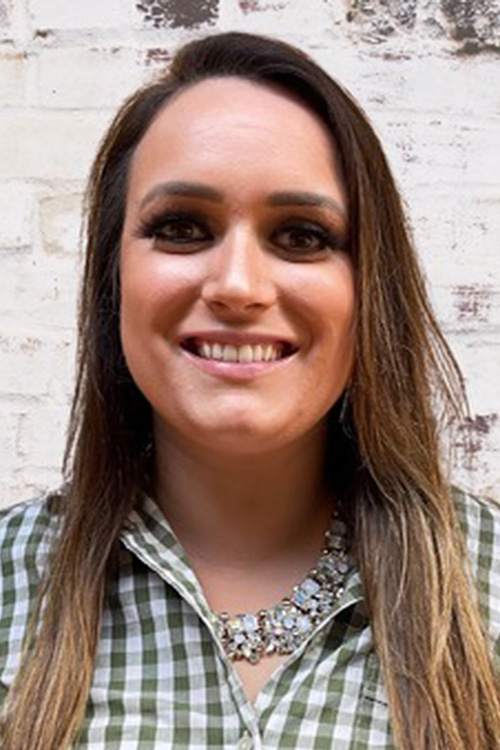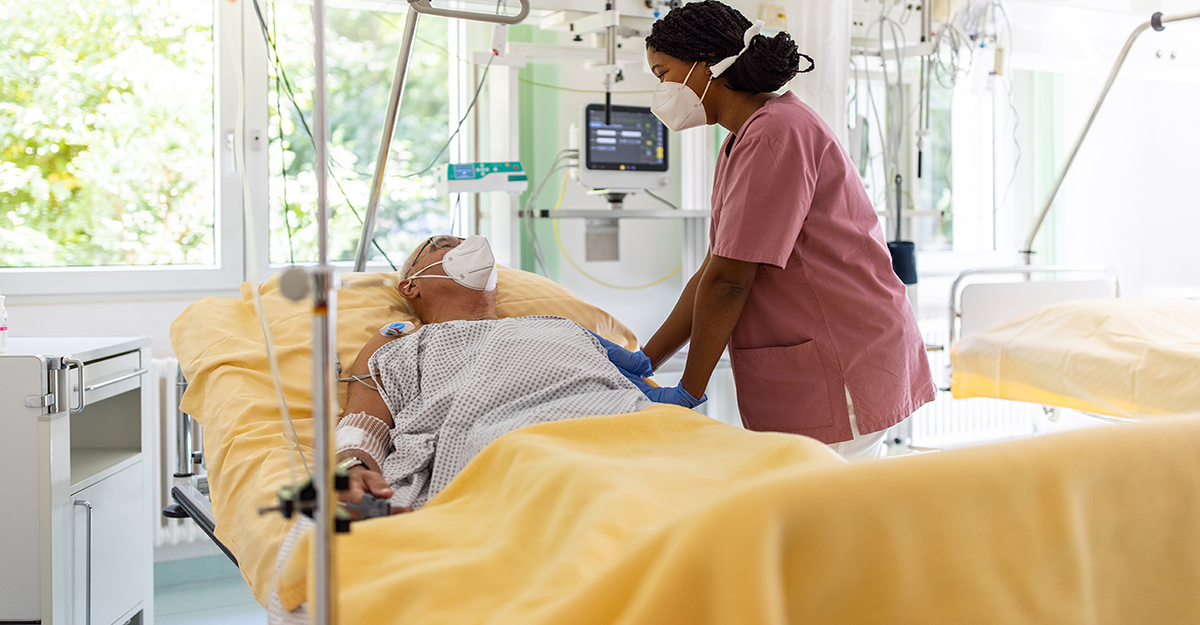The pandemic has brought skin and wound care challenges on many levels. One challenge is that COVID-19 can compromise the skin, leading to wounds that are harder to heal, according to Dianna Dashner, DNP, WCC, CLNC, LLE, senior nurse practitioner at ProMedica Skilled Nursing and Rehabilitation.
SARS-CoV-2 infection can cause virus-mediated endothelial dysfunction, which decreases tissue tolerance, authors wrote in a paper published in the summer 2022 issue of AACN Advanced Critical Care.
Dashner said the body’s inflammatory markers remain high long after an infected person’s symptoms go away.
“Inflammation markers actually take one year from the time you’ve been infected to go back to normal. So for patients who have an autoimmune disease or an inflammatory process in their bodies from a condition they already have, their markers are going to be sky high,” said Dashner, who is presenting “COVID’s Impact on the Skin: A Look at What We Know” at the September Wild on Wounds conference in Hollywood, Florida. The conference explores skin and wound care challenges and provides hands-on learning opportunities.
Common Skin Manifestations
Skin manifestations associated with COVID-19 can appear in vaccinated and unvaccinated patients, but not all need treatment or put patients at increased risk for wounds, Dashner said.

Dianna Dashner, DNP
In fact, the superficial signs of the virus can present before other symptoms. For example, patients who test positive often recall their first sign that they had an issue was a rash, according to Dashner.
“It’s usually full-body hives that start in one place then progress,” she said. “It lasts about seven days, and then it’s gone.”
For skin issues, including rashes that don’t become true wounds, healthcare professionals might take more of a watch-and-wait approach before starting treatment. But if the rash lasts more than seven days, Dashner and other wound care experts might start the patient on a topical or oral steroid to address the inflammatory process.
“That generally works and gets rid of it,” Dashner said.
Common skin conditions among COVID-19-infected adult patients of all ages include unusual cutaneous presentations such as redness of the toes and tips of the fingers. Another common skin condition associated with COVID-19 infection is petechiae, which are little red dots that mainly occur on the trunk and back but can spread to other body parts. Again, this skin condition appears to be transient, lasting about seven days before it goes away on its own, according to Dashner.
Wounds can occur in COVID-19 patients, especially those who are seriously ill, and the wounds can be related to the care these patients receive in the ICU, according to a study published in this year’s summer edition of AACN Advanced Critical Care.
“Patients critically ill with COVID-19 are at risk for hospital-acquired pressure injury, including device-related pressure injury,” according to the researchers, who studied 1,920 ICU patients, including 407 with COVID-19. They concluded that fragile skin and prone positioning during mechanical ventilatory support were risk factors for device-related pressure injury.
“Clinicians may consider incorporating factors not included in the Braden Scale (e.g., oxygenation and perfusion) in routine risk assessment and should maintain vigilance in their efforts to protect patients with COVID-19 from device-related pressure injury,” the authors wrote.
Dashner said COVID-19 patients with pressure injuries might present differently than those without the virus.
“We have actually had [COVID-19] patients coming off ventilation in the early stages of the pandemic that would have horrific pressure injuries,” she said. “But they weren’t presenting like typical pressure injuries when we first saw them.”
Patients would have deep, dark purple skin but the openings were not as deep as one would expect with a true pressure injury, she said. “They were superficial but still had that dark appearance — like a deep tissue injury,” Dashner said.
Cutaneous skin manifestations related to vascular compromise in critically ill COVID-19 patients include livedo and purpura. These lesions can be difficult to differentiate from other dermatologic conditions seen in this population, including skin failure and deep-tissue pressure injuries, wrote the authors of the study.
Still Other Wound Care Challenges

Stephanie L. Garcia, RN
Shutdowns and healthcare clinician burnout led to other pandemic-related wound care and prevention challenges.
“Pressure injury prevention has been difficult to implement for everyone, as multiple hospitals, clinics, and agencies were struggling to staff healthcare workers and new healthcare workers did not have clinicals to fall back on,” said Stephanie L. Garcia, BSN, RN, CWCN, a wound care nurse in South Florida, who is presenting, “Under Pressure: Wound Care Clinician Challenges in the COVID-19 Pandemic” during this year’s Wild on Wounds conference.
In 2020, Garcia worked in the outpatient setting and recalls the challenges in treating patients at the start of the pandemic.
“We saw fewer and fewer hyperbaric oxygen patients, and patients were not coming into the wound care center for much-needed follow-up,” she said. “Many of them were scared of the virus and not getting the follow-up they needed. It was upsetting to see.”
Skin and wound care professionals like Garcia had to juggle jobs to stay afloat during the pandemic. Instead of going into home health, she worked in both acute inpatient physical rehabilitation and in an outpatient wound care center.
“At that time, the census was dipping and hours were cut. We didn’t know when ‘elective’ procedures would occur. It was hard financially on hospitals and healthcare workers,” Garcia said.
The tide has started to change for the better, according to Garcia. Nursing students are finally getting back into some of the hospitals for much-needed hands-on education and will hopefully come to work in the acute care setting, she said.
“Multiple clinical educators have been implemented to assist in the education of new nurses. I utilize my clinical specialists from companies I have contracts with to help to educate myself and our staff about products for prevention. We are picking up the pieces as we move on and get to a new [wound care] ‘normal,’” Garcia said.
Timely delivery of wound care supplies continues to be an issue, she said.
Skin and Wound Care Precautionary Steps
Dashner, who practices in a nursing home, said she continues to take extra precautions with COVID-19-positive and COVID-19 recovered patients.
Dashner does a preventative skin assessment on patients when they are first admitted, applying a barrier cream right away. She said consistent moisturization is important because nursing home patients who have COVID-19 or recently recovered from the virus might be weak and unable to get up and go to the toilet like they normally would. The moisture barrier also acts as an incontinence barrier, she said.
“If they’re COVID-recovered, I am checking on them minimally once a month. The nursing staff does a body audit daily on them to look for any changes whatsoever. If there are any changes, I am immediately consulted,” Dashner said.
Off-loading is key, according to Dashner. With patients who are alert and don’t have a diagnosis of dementia, Dashner said she asks them to turn onto their sides without assistance to see how much mobility they have and what more she and the staff might need to do to make sure the patient is properly off-loaded.
Another preventive step is if patients are on antibiotics, they may have an increased risk of diarrhea. That’s also where moisturizing with a barrier paste can help to avoid skin breakdown.
“We have moisturizer cream on the wall in every room, so we actually moisturize these patients two or three times a day depending on their need and how much assistance they need,” she said.
For patients that have wounds and are COVID-positive or COVID-recovered, Dashner and the staff check those wounds at least weekly.
“I’m in there sometimes two times a week,” she said. “We take pictures once a week. We look at these wounds for changes that actually show there is coagulation going on. If the patient has a wound over a bony prominence, we automatically put on a low air loss mattress.”
Hospitals need proning protocols, according to Garcia, who said that it can be a life-saving practice for patients who are on ventilation to be proned for over 12 hours.
Essentially, Dashner recommends taking every skin and wound care preventative measure one can think of, including nutritional supplementation and adding protein to the diets of patients who might be undernourished.
Don’t miss out on what Wild on Wounds has to offer. Register today!
What do you think?


